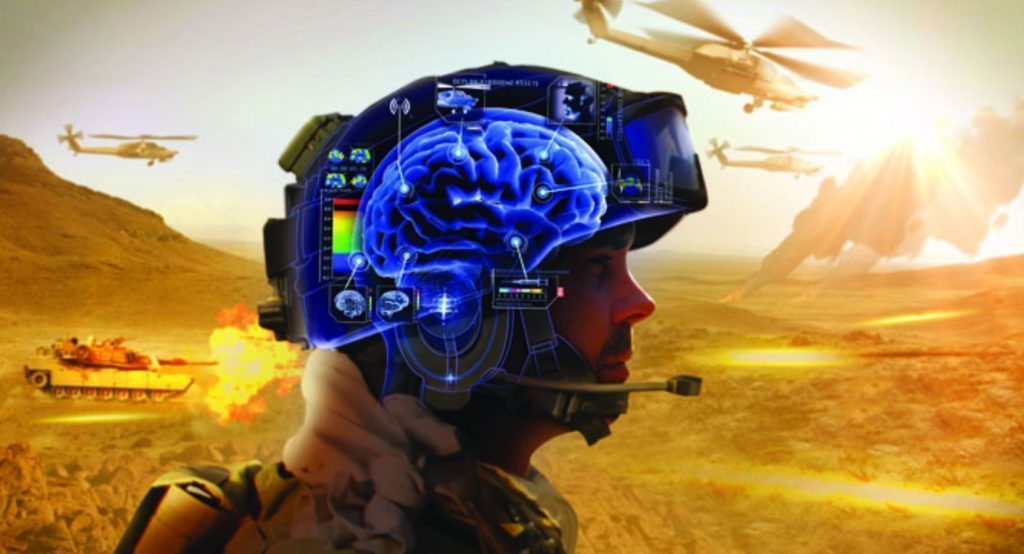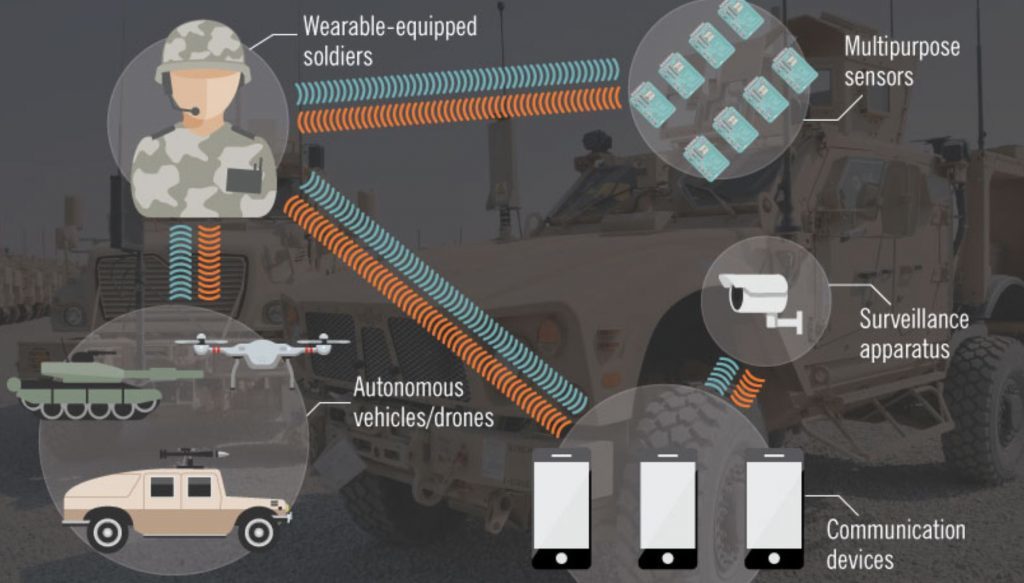Public resistance in the United States has finally begun to mount against the use of facial recognition systems due to privacy issues as well as documented inaccuracies. Even police departments have begun to dump the use of biometrics, particularly in the area of pre-crime algorithms that also have demonstrated the failures of artificial intelligence to be accurate enough for use in law enforcement.
Also Read: Amazon Facial Rekognition Software Trial In Orlando Canceled After 15 Months
Nevertheless, the military is firmly embracing both uses as the Army aims to roll out facial recognition goggles that would enable soldiers to “see through the eyes” of any weapons system and highlight people for further investigation … and presumably to be targeted for elimination.
“Very soon” U.S. soldiers could be able to identify enemies, suspects, or any persons of interest they’re seeking just by looking through the goggles on their head.
U.S. Army officials are testing a new headset that will—potentially—allow soldiers looking through them to recognize the faces of individuals in a crowd, and much more, including translate foreign language street signs into English, see through the eyes of nearby flying bug drones, and train anywhere in a semi-virtual environment, all through the same lens.
[…]
“We’re going to demonstrate very, very soon, the ability, on body — if there are persons of interest that you want to look for and you’re walking around, it will identify those very quickly,” said Col. Chris Schneider, project manager for IVAS, at a U.S. Army Futures Command demonstration in Virginia.
This plan would seem to take the military one step closer toward their long-held vision to build a full-scale matrix of (smart) war that has been labeled the Internet of Battlefield Things (IoBT).
This latest development appears to be an extension of a project called MUSIC that I covered back in 2011. It was part of Future Combat Systems to integrate unmanned and manned aircraft across all branches of military, and would include a variety of autonomous systems, including drone swarms. Once the pieces on the battlefield are interconnected, the next logical step is to integrate the soldier into the information feed. This was clearly laid out in a 2017 Army solicitation that defined its goals:
The ability of the Army to understand, predict, adapt, and exploit the vast array of internetworked things that will be present of the future battlefield is critical to maintaining and increasing its competitive advantage. The explosive growth of technologies in the commercial sector that exploits the convergence of cloud computing, ubiquitous mobile communications, networks of data-gathering sensors, and artificial intelligence presents an imposing challenge for the Army. These Internet of Things (IoT) technologies will give our enemies ever increasing capabilities that must be countered, but commercial developments do not address the unique challenges that the Army will face in using them.
The Internet of Battlefield Things would look something like this:
All of the concerns already expressed about facial recognition systems and the use of biometrics as predictive tools down here at the civilian level will be amplified once they are fully integrated into warfare, and the consequences could be far more grave than a mistaken arrest. Soldiers literally will be going in functionally blind as the Army admits in details about the first step of the program that will be enhanced night vision goggles:
The new night vision goggles will feature an on-rifle sight that can provide a visual feed to the lenses. It will allow the soldier to essentially shoot around corners or even behind them.
“Everything that his weapon is seeing, he’ll see it. We actually bring people down to our range, have them look this way, engage this way,” said Brig. Gen. David Hodne, Soldier Lethality Cross-Functional Team director.
“That rapid target acquisition would actually allow him, if he chose, to stand behind the building to actually stick his weapon out, not expose his body, and he would still be able to engage targets, accurately, without exposing himself,” said Hodne.
Afterward, the overlay of artificial intelligence and aerial weapons systems will only further remove the soldier from unilateral decision making.
It looks like we are about to receive much more data about the viability of these A.I. military systems, as the Army is ready to roll this out in short order:
Army Futures Command was created in October 2017 and will reach full operational capability at the end of this month.
Nicholas West writes for Activist Post. Support us at Patreon for as little as $1 per month. Follow us on Minds, Steemit, SoMee, BitChute, Facebook and Twitter.
Subscribe to Activist Post for truth, peace, and freedom news. Follow us on Minds, Twitter, Steemit, and SoMee.
Provide, Protect and Profit from what’s coming! Get a free issue of Counter Markets today.



Be the first to comment on "Military Will Use Facial Recognition Goggles to Help Soldiers Identify People Through Weapons Systems"